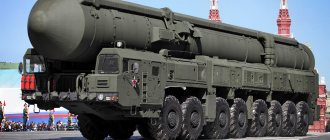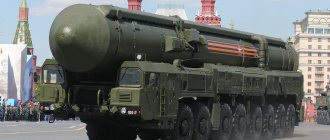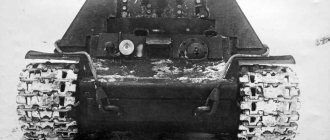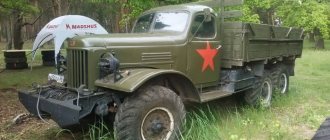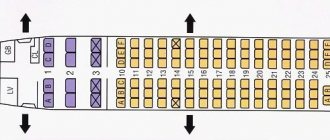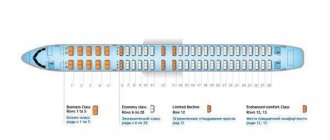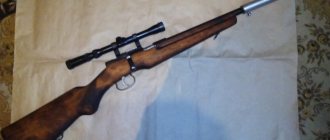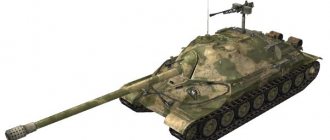Solid fuel floor-mounted boiler Zota "Topol-M" 60 kW with a water circuit is designed for heat supply of individual residential houses and public utility buildings equipped with a water heating system with forced or natural circulation, hot water supply using an indirect heating tank, in open and closed heating systems with a maximum coolant temperature of up to +95 °C and pressure of up to 3 bar. The boiler runs on solid fuel, coal, wood, fuel briquettes. Gas-tight doors and a primary air supply system ensure precise control of the boiler power. The heat exchanger is designed to allow easy access to heat-conducting surfaces for cleaning. The boiler has a spacious firebox and is capable of operating for a long time on one load of fuel. This boiler has the highest efficiency among budget models of solid fuel and combined heating boilers.
The body of the Zota “Topol-M” solid fuel boiler under the decorative casing is insulated with balsat cardboard - this feature reduces heat loss from the water jacket. There are two options for loading fuel - a horizontal door will be convenient for top loading of coal and access to the heat exchanger when cleaning the boiler, and a horizontal door will be suitable for loading firewood. The heat exchanger consists of three circuits. A tubular heat exchanger in combination with a removable damper creates a three-pass heat exchanger. The design allows for more efficient heat removal from the exhaust flue gases, thereby increasing efficiency. A thermomanometer is installed on the front panel, showing the water supply temperature and pressure inside the boiler.
Gas or pellet fuel can be used as a heat source - for this you need to install an appropriate burner. In addition, it is possible to install an electric heating element (heating element unit). To achieve greater efficiency from the burned fuel, the boiler can be equipped with a TurboSet pressurization fan. The fan will blow air onto the fuel particles that rise with the flue gases. The particles will burn out in the boiler. The water jacket is located along the entire contour of the boiler, including under the ash pan. The design cools the ash box, prevents it from deforming, provides additional heat removal and improved coolant circulation. You can buy a Zota “Topol-M” 60 kW floor-standing solid fuel boiler in the online store duim24.ru at the best price with delivery.
Operation of the Zota Topol-M boiler
An instruction manual is supplied with each Zota Topol-M boiler. But these simple units are so simple that they don’t need any instructions. Firewood is loaded here through the top door (shaft type), which is very convenient. The screw door on the front panel will help you adjust the logs in the firebox. A simple thermometer is provided to monitor the temperature.
Loading of firewood for normal combustion is carried out through the screw door. If you need to ensure long-term burning, close it and add firewood to the very top through the loading door in the upper part.
Starting the Zota Topol-M boiler is done as follows - put the firewood on the grate, set it on fire, not forgetting to fully open the ashpit. As soon as the logs flare up, add another portion of fuel. Remember that the firebox must be filled with wood at least 15 cm deep. Until the heat exchanger warms up to a temperature above +60 degrees, condensation may form on it.
Power adjustment in Zota Topol-M is carried out using a valve in the chimney and a damper. If you are using a mechanical traction control, set it to a limit of +60 degrees and wait until it is reached. As soon as the coolant temperature reaches the set value, set the length of the chain so that the damper (aka the blower) is slightly open by 2 mm. Now the boiler will be able to independently maintain the set temperature by opening or closing the damper.
Please note that Zota Topol-M boilers require periodic cleaning - they become clogged with soot, which is not thermally conductive. It is also necessary to clean the ash pan and grate (especially before operating in long-term burning mode).
MAZ-7917 - a unique chassis for the Topol missile system
The Second World War forced us to reconsider the approach to the development of the automotive industry. The same phenomenon affected the Soviet Union. The ensuing disaster showed that the country was completely unprepared for drastic changes in terms of transport equipment. That is why, immediately after the end of hostilities, in 1945, many enterprises of the USSR began creating new military equipment. It was necessary to provide the fleet with modern and powerful vehicles.
The equipment included a new power unit with 12 cylinders and turbocharging
The intercontinental complex “Topol” and “Topol-M” are machines that, even during the Cold War, carried all the strength and power of the missile forces. The MAZ-7917 car was also unique for its time. It had an unusual design that is of interest even today. To implement the created concept of an autonomous missile system, a reliable chassis was needed. The main attention was paid to its carrying capacity, which should have been at least 50 tons. Design of the rocket began in 1976. Almost at the same time, the Minsk Automobile Plant began creating a chassis, which in the future acquired the factory index 7917. They decided to take the MAZ-7912 model as the basis. They installed a new cabin on it, which had 3 seats.
The wheel formula of the new technology was presented in the form of 14x12. Experts determined the curb weight to be 32.5 tons, and the carrying capacity reached 63 tons. It is interesting that the design involved an odd number of wheel pairs - 7. This was done in order to unify the equipment with those developments of the plant that were created earlier. Much attention was paid to the MAZ-547 model. Therefore, the front pairs of wheels were steerable. The non-standard design led to the fact that the 4th axis was not a driving one, which is why it had to be further strengthened. The fact is that during the passage of irregularities, the main load from the complex was placed on the bridge - almost 105 tons.
Consumption per 100 km was 200 liters, but in real use it could reach up to 350 liters
The equipment included a new power unit with 12 cylinders and turbocharging, which produced 720 hp. It was supplemented with a pre-heater, which warmed up the engine at -40 degrees to operating condition in just half an hour. A 4-speed gearbox operated in conjunction with the unit. The factory provided an independent type of hydropneumatic suspension. The driver had the opportunity to brake with the engine in second gear lock mode. The diameter of the wheels was 25 inches and the width was 60 cm, they were supplemented with an inflation system.
The vehicle could accelerate to 40 km/h in 65 seconds
When creating the technology, they tried to use more lightweight materials - titanium and high-strength plastic. This provided a payload-to-weight ratio of -2.2. The vehicle could accelerate to 40 km/h in 65 seconds. Consumption per 100 km was 200 liters, but in real use it could reach up to 350 liters. All equipment was designed for a mileage of 18,000 km, and the service life was at least 10 years. But more often than not, these missile carriers traveled much further, which once again confirms the strength of the structure.
Bottom line. MAZ-7917 is a unique chassis for the Topol missile system. The equipment was distinguished by its high load capacity and operational reliability.
The heating device is the warmth in the house
Many settlements today have not yet been gasified.
Therefore, residents of such villages have to look for an alternative to gas equipment. The best solution in this case is to heat a country or private house with a solid fuel boiler. It is becoming increasingly popular not only due to its ability to work on wood or coal, but also due to its complete autonomy.
After all, a solid fuel boiler does not require either gas or electricity. It can only operate on wood, while maintaining a comfortable room temperature. However, such devices are available in various modifications, and in order to make the right choice, you need to at least briefly get to know each of them.
New engines and body materials
It is not only the unpredictability of the trajectory in the active area that makes the strike of the new weapon irresistible, but also the very high speed. "Topol-M" at different stages of the flight is driven by three main engines and very quickly gains altitude. Solid fuel is a mixture based on ordinary aluminum. Of course, the composition of the oxidizer and other details are not disclosed for obvious reasons. The step bodies are made as light as possible; they are made of composite materials (organoplastic) using the technology of continuous winding of hardening fibers of a heavy-duty polymer (“cocoon”). This decision has a double practical meaning. Firstly, the weight of the Topol-M rocket is reduced, and its acceleration characteristics are significantly improved. Secondly, the plastic shell is more difficult to detect by radar; high-frequency radiation is reflected from it worse than from a metal surface.
To reduce the likelihood of destruction of charges at the final stage of the combat course, numerous false targets are used, which are very difficult to distinguish from real ones.
Experts recommend
The operation of a solid fuel boiler will be effective only if the fuel for it is correctly selected, as well as regular maintenance of the device. And in order to determine for yourself how to heat a solid fuel boiler and achieve maximum efficiency, professionals advise:
- When burning wood, a large amount of smoke is released, so it is recommended to place larger logs at the edges and small kindling in the middle
- The use of peat in densely populated areas is not recommended due to the release of large particles into the atmosphere and the release of a sour odor
- Complete combustion of anthracite requires a massive hearth, so when using it, larger fragments are sifted out when extracting the ash and reused
Operation of the Zota Topol-M boiler
An instruction manual is supplied with each Zota Topol-M boiler. But these simple units are so simple that they don’t need any instructions. Firewood is loaded here through the top door (shaft type), which is very convenient. The screw door on the front panel will help you adjust the logs in the firebox. A simple thermometer is provided to monitor the temperature.
Loading of firewood for normal combustion is carried out through the screw door. If you need to ensure long-term burning, close it and add firewood to the very top through the loading door in the upper part.
Starting the Zota Topol-M boiler is done as follows - put the firewood on the grate, set it on fire, not forgetting to fully open the ashpit. As soon as the logs flare up, add another portion of fuel. Remember that the firebox must be filled with wood at least 15 cm deep. Until the heat exchanger warms up to a temperature above +60 degrees, condensation may form on it.
Power adjustment in Zota Topol-M is carried out using a valve in the chimney and a damper. If you are using a mechanical traction control, set it to a limit of +60 degrees and wait until it is reached. As soon as the coolant temperature reaches the set value, set the length of the chain so that the damper (aka the blower) is slightly open by 2 mm. Now the boiler will be able to independently maintain the set temperature by opening or closing the damper.
Please note that Zota Topol-M boilers require periodic cleaning - they become clogged with soot, which is not thermally conductive. It is also necessary to clean the ash pan and grate (especially before operating in long-term burning mode).
Short description
A small stylish boiler will effectively heat a house or cottage. Optional - pellets, gas, electricity. Convenient fuel loading - vertically and horizontally. Control - manual (PU EVT-I1 and automatic traction control - option)
Power min/max: 5/16 kW
Heating area: up to 160 sq.m
Fuel: brown coal, long-flame coal, firewood, wood briquettes, coal briquettes, pellets (optional, when purchasing a burner), natural or liquefied gas (optional, when purchasing a burner), electricity (optional, block heating element no more than 9 kW)
Features: new Zota 2019; water-filled grates; increased heat exchanger configuration; 2 combustion doors (for horizontal and vertical loading); adjustment - through the door ash flap, upon purchase - through the draft regulator; panel thermometer; additional options (when purchasing equipment) - heating elements and PU for heating with electricity, burning pellets or gas, long-term combustion with TurboSet
Dimensions (WxHxD): 440x870x805 mm
Fuel:
Manual loading Type of fuel solid fuel, coal, firewood, fuel briquettes Possible types of fuel (optional) gas and pellets (separate burner), electricity (heating element) Coal fraction size 20-300 mm Coal content of fraction 1-10 mm no more than 4% Bulk density 650 kg/cub.m Humidity no more than 23-25% Ash content no more than 10-15% Coal dust content no more than 4% Heat output of coal no more than 5000-6000 kcal/kg Heat output of coal briquettes no less than 6000 kcal/kg Heat output of wood briquettes not less than 4150 kcal/kg Heating capacity of firewood not less than 3000 kcal/kg
Types of kindling
Most devices of this type operate on different types of fuel:
- Firewood
- Peat briquettes
- Granules
- Anthracite
- Coxe
- Brown coal
Moreover, their calorie content is different, and the effective operation of the device depends on it. Therefore, those who purchase such a boiler should take into account that when burning less calorific fuel, the power drop can be up to 30% (at acceptable humidity) and even more at natural humidity.
There is one more nuance. Usually the manufacturer indicates what is better to heat a solid fuel boiler and what fuel should be used as the main one. It is advisable to comply with these requirements in order to achieve maximum efficiency and make heating a country house with a solid fuel boiler as convenient as possible.
For example, when it is recommended to burn brown coal, it should be used as the main coal, and fine-grained fractions should be added only to the hot bed and in small portions.
Briquettes - can be peat, straw or wood. It is ideal to use only those produced by pressing. Briquettes that break down into sawdust can only be used together with firewood or brown coal, so as not to render the boiler unusable.
Pellets can also be made from straw or wood waste. They are pressed, like briquettes, and are most often used in special solid fuel boilers.
The consumption of firewood in a solid fuel boiler will be minimal if it is dry, only then can you achieve maximum power from the boiler and extend its service life. Otherwise, the useful energy content of the wood will be significantly lower.
Secrets from the newspaper
And the Topol-M, the newspaper reported, is a monoblock three-stage strategic silo-based solid-propellant missile. It is classified with the letter “A”, which means it is constantly located in a transport and launch container. This container guarantees that the missile is ready for combat use without factory maintenance for at least 15 years. The previous one is only ten.
The length of the “Topol-M” together with the head part is 22.7 m (for the “Topol” it is 21.5 m). The case diameter is 1.95 m (Topol has 1.80 m). Starting weight - 47.2 tons ("Topol" - 45.1 tons). Throwing weight - 1200 kg (prototype - 1 t). The launch range is more than 10,000 km. The exact power of the nuclear charge is not known, but based on some signs it can be judged that it is included in the megaton class of nuclear warheads. Let me remind you that Topol has 550 kt.
Deputy Director of the Moscow Institute of Thermal Engineering Lev Solomonov, one of the creators of Topol-M and the elder brother of the general designer of MIT and Topol-M Yuri Solomonov, told me then that the nuclear charge of their “product” is quite effective. Not with excessive power, like the warheads of some other missiles, which, as experts understand, will never be used, since they can destroy half the planet, which, in principle, is suicide. Namely, in order to make a possible aggressor think about whether he should threaten Russia or whether it’s better not to.
The nuclear charge for the RS-2PM2, like all previous ones, was created at the VNIIEF design bureau in Arzamas-16. The chief designer is a student of Academician Yuli Khariton, Academician Georgy Dmitriev. And the combat unit was created by the team of the Moscow Institute of Thermal Engineering, the main developer of the entire Topol-M complex, under the leadership of Academician Boris Lagutin and Corresponding Member of the Russian Academy of Sciences Yuri Solomonov. Due to new aerodynamic, ballistic and structural qualities, this unit has the ability to overcome any missile defense, existing and future, and retains the ability to remain on the calculated trajectory and reach a given target under any conditions and hit the specified object with minimal deviation.
General designer for ground-based missile systems at the Moscow Institute of Thermal Engineering Yuri Solomonov, 1997 © Anton Novoderezhkin/TASS
How high these combat qualities can be judged, if only because the firing accuracy of the previous mobile ground system "Topol", or SS-25 Sickle, is two times less than that of the "Topol-M", and the maximum deviation from the center of the target itself of the perfect American strategic missile MX is 350 m, which is also worse than that of the RS-2PM2. In addition, the flight path of the warhead in the final part of the trajectory is impossible to predict.
All the test launches, which, by the way, the Americans observed with their national means of control - only one of them was unsuccessful - demonstrated the unpredictability of the behavior of the warhead at this distance, and therefore the highest degree of survivability. It is also ensured by the ability of the warhead to withstand the damaging factors of a nuclear explosion (shock wave, X-ray, light, gamma and neutron radiation).
Experts told me that the Topol-M can be knocked off its trajectory only when its warhead is hit by another missile. Like a bullet hitting a bullet. And such a result, in their opinion, is practically unattainable.
The readiness time of the complex began to be measured not in tens of minutes, as was the case with liquid-propellant rockets, or in several minutes, as in the previous mobile complex, but in seconds. If the American MX rocket leaves the silo after receiving the “launch” command after 30 seconds, then the Topol-M is a few seconds earlier. The advantage in these moments would seem to be quite insignificant, but behind them is not only the highest degree of combat readiness, but also very important technological and design discoveries and features of the new missile system, which laid the basic foundations for further modernization and improvement of the complex.
Many of these features of the new rocket are related to its first stage engine. It was developed at the Yuzhnoye Design Bureau in Dnepropetrovsk under the leadership of General Designer Stanislav Konyukhov. Then, when Ukraine left the cooperation, he was transferred to MIT. And already in Moscow it was finalized and “introduced” into the new complex. And the Moscow Institute of Thermal Engineering, in addition to developing the ideology of the entire system, also has priority in the use of new composite materials and alloys on the complex, the creation of rotary, as experts say, controlled nozzles and auxiliary engines. Their development was led by Deputy General Designer Yuri Vinnichenko.
In Lyubertsy NPO Soyuz, which was then headed by academician Zinovy Pak and then Yuri Milekhin, they found the original recipe and technology for solid propellant charges, which increased the energy and power of the rocket by one and a half times. And the capital's NPO of Automation and Instrumentation, headed by academician Vladimir Lapygin, created a new flight control system and a fundamentally new aiming system for the Topol-M (before that it was made in Kiev).
The Plesetsk test site became the experimental testing base for the new Topol. All 150 bench tests and inspections of equipment systems, which previously were carried out only at factories and design bureaus under the strictest supervision, this time were carried out by the military and designers directly in the missile silo. This, as they told me at the Main Command of the Strategic Missile Forces, reduced the time needed to create the complex by almost two years and saved the financial expenses of the Missile Forces in 1994 by 21 billion rubles. And the entire creation of the complex, from the sketch to the first pilot launch, cost the taxpayer 142.8 billion rubles (in 1994 prices).
The rocket scientists I knew refused to discuss whether this was a big expense or not. “It depends on what you compare it to,” they said. — If with the renovation of the White House or the State Duma building, then they are significantly lower. If we include expenses for all armed forces, then less than one percent. Whether or not Russia needs the new Topol-M missile system today and tomorrow is not for us to decide.”
By the way, the first two 15Zh65 RT-2PM2 missiles were put into silos for experimental combat duty on December 25, 1995 in the village of Tatishchevo, Saratov region, in the 60th missile division, where (smile of fate) the general designer once served as a lieutenant after graduating from the institute complex Yuri Solomonov. The author of these lines then managed to “distinguish himself” by indicating the geographical coordinates of these mines in a new newspaper publication, which was incorrect. By decree of Russian President Vladimir Putin on June 13, 2000, Topol-M was adopted by the Strategic Missile Forces.
According to the START III treaty, signed by Moscow and Washington in 2010, by April 2022 our countries could have 1,550 nuclear warheads and 700 deployed nuclear weapons carriers - land-based ballistic missiles, submarine-launched ballistic missiles and heavy strategic bombers. This means that the Strategic Missile Forces will be able to have no more than eleven divisions, which will be armed with no more than 350 strategic missile systems. Half of them, if financial resources allowed, were agreed in those years at the Main Headquarters of the Strategic Missile Forces, should be made up of divisions of the Topol-M mine and mobile complex.
Heating system with solid fuel apparatus
The use of devices of this type, although in demand, is not as popular as gas ones. This is due to the need to constantly add fuel to solid fuel boilers and monitor the operation of the device. However, there are several ways to simplify the operation of a solid fuel boiler:
- Carrying out automatic fuel loading
- Turning on the device together with the electrical
- Automation of water supply
The first is easily accomplished by connecting pellet equipment to the heating system. In it, fuel is supplied automatically and human participation in this process is not required. Such heating of a private house with a solid fuel boiler is acceptable even if you do not live there permanently.
The second method is considered the cheapest in terms of labor costs and the most popular. Two devices are connected in parallel to the primary ring of the system. At the same time, the electric one only maintains the minimum water temperature. And the main source of heat is solid fuel.
The last method involves turning on the accumulation tank. It accumulates the coolant prepared by the boiler during the day, with the aim of further consuming it at night, when there is no manual loading of fuel. Such a system can be automated.
Each of the schemes has the right to exist and the choice of the optimal one depends on various factors.
Types of boilers operating on solid fuel
All equipment of this class can be divided into 2 groups:
- Automatic fuel supply
- Manual loading
The first are pellet boilers. In them, granules play the role of fuel; they are loaded into special bunkers and from there they enter the furnace. Such devices have high efficiency and can operate automatically for weeks, without human intervention.
The latter, depending on the design features, are divided into 3 types:
- Classic
- Pyrolysis
- Long burning
They can use firewood and wood waste as fuel.
A traditional or solid fuel boiler using wood has been produced for a very long time, and its design has remained virtually unchanged. In it, the combustion chamber is located at the bottom and is considered the hottest part. Most often it is made of cast iron or steel. However, such heating of a wooden house with a solid fuel boiler is used quite rarely, as it requires frequent maintenance.
Pyrolysis devices are a new step in the field of solid fuel equipment. Their work is based on the principle of decomposing wood into solid residues and gases and burning the latter. The advantages of this device include high efficiency, minimal formation of ash and soot. Among the disadvantages is the need to burn dry wood with a humidity of no more than 20%.
Long-lasting combustion - their operating principle was developed in Russia and has no analogues in the world yet. It is a new generation boiler not only in terms of design, but also in its operating principle. Its main advantage is the simplicity of its design and the ability to service it once a day when operating on fuel with natural humidity. A solid fuel wood boiler has the most precise power control and can produce a given amount of heat.
Development
Work on the creation of a new complex began in the mid-1980s.
The resolution of the Military-Industrial Commission of September 9, 1989 ordered the creation of two missile systems (stationary and mobile) and a universal solid-fuel three-stage intercontinental ballistic missile for them. This development work was called “Universal”, the complex being developed was designated RT-2PM2. The development of the complex was carried out jointly by the Moscow Institute of Thermal Engineering and the Dnepropetrovsk Yuzhnoye Design Bureau. The missile was supposed to be unified for both types of complexes, but the original project assumed a difference in the warhead breeding system. The combat stage for the silo-based missile was to be equipped with a liquid-propellant rocket engine using the promising Pronit monopropellant based on propylene glycol dinitrate (English)Russian. For the mobile complex, MIT developed a propulsion system using solid fuel. There were also differences in the transport and launch container. For the mobile complex it had to be made of fiberglass. For a stationary one - made of metal, with a number of ground equipment systems mounted on it. Therefore, the rocket for the mobile complex received the index 15Zh55, and for the stationary complex - 15Zh65.
In March 1992, it was decided to develop the Topol-M complex based on developments under the Universal program (in April, Yuzhnoye ceased its participation in work on the complex). By decree of Boris Yeltsin of February 27, 1993, MIT became the lead enterprise for the development of Topol-M. It was decided to develop a unified missile with only one variant of combat equipment - with a solid fuel combat stage propulsion system.
Testing of the rocket began in 1994. The first launch was carried out from a silo launcher at the Plesetsk cosmodrome on December 20, 1994. In 1997, after four successful launches, mass production of these missiles began. The act on the adoption of the Topol-M intercontinental ballistic missile into service by the Strategic Missile Forces of the Russian Federation was approved by the State Commission on April 28, 2000, and the Decree of the President of the Russian Federation on the adoption of the DBK into service was signed by Vladimir Putin in the summer of 2000, after which the mobile ground-based missile system entered flight tests (PGRK) based on the eight-axle chassis MZKT-79221. The first launch from a mobile launcher was carried out on September 27, 2000.
Structures involved
The following structures were involved in the development and production of combat and training equipment of the Topol-M complexes:
- Rocket - JSC Scientific and Technical Center Complex-MIT, Moscow (development); JSC Votkinsk Plant, Votkinsk, Udmurt Republic (production);
- Control system - FSUE "Scientific and Production Center for Automation and Instrumentation named after. Academician N.A. Pilyugin”, Zyuzino, Moscow (development); OJSC LOMO, St. Petersburg (development/production);
- Warhead and warheads - RFNC "VNIIEF", Sarov, Nizhny Novgorod region. (development/production);
- Drives - State Unitary Enterprise "VNII "Signal", Kovrov, Vladimir region. (development); OJSC "PO" Plant named after. A.V. Ukhtomsky", Lyubertsy, Moscow region. (production);
- Launcher and support vehicle - FSUE "TsKB "Titan" (development) and SE "PO "Barricades", Volgograd, Volgograd region. (production);
- Starting rocket engine, basic load-bearing structures (BNS) for rockets - FCDT "Soyuz", Dzerzhinsky, Moscow region. (development);
- Silo launchers - FSUE OKB Vympel, Moscow (development, creation and conversion of existing ones for new missiles); JSC GOZ, St. Petersburg (production of structures);
- Container made of composite materials - JSC Central Research Institute of Special Machine Building, Khotkovo, Moscow region.
Description and characteristics
Zota Topol-M boilers are a whole series of heating equipment. It is available in models with a power of 14, 20, 30, 42 and 60 kW. The manufacturer of heating equipment is the domestic enterprise LLC TPK Krasnoyarskenergokomplekt. The main advantage of the products is their affordability. For example, the younger model costs about 30 thousand rubles, and the older one costs about 60 thousand rubles.
Let's look at other features and advantages of Zota Topol-M boilers:
- High burning time;
- Easy soot removal;
- Possibility of installing a block of heating elements;
- High heat transfer efficiency due to a three-pass heat exchanger.
The equipment does not require connection to the mains and can operate autonomously.
Main technical characteristics
In our review, we have already described the launch of the Zota Topol-M boiler. Now we will look at the characteristics of this equipment. As already mentioned, the power of the presented models varies from 14 to 60 kW. Samples with a power from 14 to 30 kW need a chimney with a diameter of 150 mm, and older samples need chimneys with a diameter of 180 mm. The coolant temperature is regulated in the range from +40 to +90 degrees, and the draft regulator provides adjustment with an accuracy of ±2 degrees.
Zota Topol-M boilers are good because they can be retrofitted with heating elements to maintain the temperature. They are not included in the basic package; they will have to be purchased separately. Their power ranges from 3-9 kW. There is another nice option - these boilers can be easily retrofitted with gas burners. This is relevant for those who are waiting for the gas main to be supplied in the very near future - you can heat with wood and then switch to gas by simply purchasing an additional burner and connecting it to the unit.
Indices of missile systems of the Strategic Missile Forces
DATA FOR 2022 (standard replenishment) Indices of missile systems of the Strategic Missile Forces
| Official name | Type | Western designation | Complex | SPU / APU | Rocket | Rocket is official | Note |
| “Barguzin” | BZHRK | 15Zh83 (source, source) | |||||
| “Perimeter-RC” / “Sirena” | PGRK | 15P175 | 15Yu75 / 15Zh75 (source) | command missile based on the Topol PGRK and 15Zh58 missiles | |||
| RS-26 “Rubezh” | PGRK | KY-26/SS-X-31 | 15U194 (?) | 15Zh67 (source) | 2015 undergoing testing MZKT-79291 (?) | ||
| RS-24 “Yars-M” | OS | 15P165M1 (source) | 15P765M1 (?) | 15Zh65M / 15Zh65M1 / 15Zh80 (source) | 2012 (15Zh65M1)2016 (15Zh80) | ||
| RS-24 “Yars” | OS | SS-29SS-27 mod.3 SICKLE-С / STALIN | 15P165M | 15P765M | 15Zh65M | RS-12M2R | |
| RS-24 “Yars-M” (?) | PGRK | 15P155M1(source) | 15U175M1 | 15Zh55M1 (?) | 2012 | ||
| RS-24 “Yars” / “Topol-MR” | PGRK | SS-29SS-27 mod.2 SICKLE-B / STALIN | 15P155M | 15U175M | 15Zh55M | RS-12M2R | MZKT-79221 |
| "Speed" | PGRK | 15P666 | 15Zh66 | RSS-40 | |||
| "Albatross" | OS | 15P170 | 15P770? | 15Zh70 ? | |||
| RS-12M1 “Topol-M” | PGRK | SS-27 SICKLE-B/STALIN | 15P155 | 15U175 | 15Zh55 | RT-2PM1 | |
| RS-12M2 “Topol-M” | OS | SS-27 SICKLE-B | STALIN | 15P06515P165 | 15P765, 15P765-18, 15P765-18M, 15P765-18E, 15P765-30, 15P765-30P, 15P765-35 | 15Zh65 | RT-2PM2 | originally – Yuzhnoye Design Bureau |
| “Virgin soil” | PGRK | 15P962 | 15P162, 15P662 | 15Zh62 | MIT (source) | ||
| RS-22A “Well done” | BZHRK | SS-24 SCALPEL mod.3 | 15P761 | 15P961 | 15Zh61 | RT-23UTTH | Yuzhnoye Design Bureau |
| RS-22B | OS | SS-24 SCALPEL mod.2 | 15P060, 15P160 | 15P760, 15P960 | 15Zh60 | RT-23UTTH | Yuzhnoye Design Bureau |
| RSS-40 “Courier” | PGRK | SS-X-26 | 15P159 | 15U16015U160M | 15Zh59 | MAZ-7909MAZ-7929 | |
| RS-12M “Topol” | PGRK | SS-25 SICKLE | 15P158 | 15U168 | 15Zh58 | RT-2PM | MAZ-7917 |
| RS-12M “Topol” | PGRK | SS-25 SICKLE | 15P158.1 / 15P658 | 15U128.1 | 15Zh58 | RT-2PM | MAZ-7912 |
| “Pioneer-3” | PGRK | SS-20 SABER mod.3 SS-X-28 SABER | 15P157 | 15U167 | 15Zh57 | MAZ-7916 | |
| "Burn" | PGRK | 15P656 | 15Zh56 | command rocket | |||
| “Universal” /RS-12M1 “Topol-M” | PGRK | SS-27 SICKLE-B | 15P155 | 15U175 | 15Zh55 | RT-2PM1 (source) | MZKT-79221 |
| “Pioneer-UTTH” / “Pioneer-2” | PGRK | SS-20 SABER mod.2 | 15P653 | 15U136 | 15Zh54 (GCh)15Zh53 (MIRV) | MAZ-547V | |
| RS-22 “Well done” | BZHRK | SS-24 SCALPEL | 15P952 | SM-SP-35 | 15Zh52 | RT-23 | Yuzhnoye Design Bureau |
| 15Zh51 | command rocket | ||||||
| RS-14 “Temp-2SM2” | PGRK | 15P648 | 15Zh48 | ||||
| RS-14 “Temp-2SM1” | PGRK | 15P647 | 15Zh47 | ||||
| RSD-10 “Pioneer-K” / “Pioneer-M” | PGRK | SS-20 SABER mod.1 | 15P645K | 15Zh46 | RT-21M | MAZ-547A | |
| RSD-10 “Pioneer” | PGRK | SS-20 SABER mod.1 | 15P645 | 15U106 | 15Zh45 (MIRV) | RT-21M | MAZ-547A |
| OS | 15Zh44 | RT-23 | Yuzhnoye Design Bureau | ||||
| BZHRK | SM-SP-35 | 15Zh43 | RT-22 | Yuzhnoye Design Bureau | |||
| RS-14 “Temp-2S” | PGRK | SS-X-16 / SS-16 SINNER | 15P642 | 15U67 | 15Zh42 | MAZ-547A | |
| OS | SM-SP-27 | 15Zh41 | RT-21 | Yuzhnoye Design Bureau |
